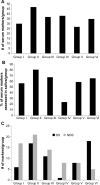Literature-based discovery of salivary biomarkers for type 2 diabetes mellitus
- PMID: 26005324
- PMCID: PMC4433061
- DOI: 10.4137/BMI.S22177
Literature-based discovery of salivary biomarkers for type 2 diabetes mellitus
Abstract
The alarming increase in type 2 diabetes mellitus (T2DM) underscores the need for efficient screening and preventive strategies. Select protein biomarker profiles emerge over time during T2DM development. Periodic evaluation of these markers will increase the predictive ability of diabetes risk scores. Noninvasive methods for frequent measurements of biomarkers are increasingly being investigated. Application of salivary diagnostics has gained importance with the establishment of significant similarities between the salivary and serum proteomes. The objective of this study is to identify T2DM-specific salivary biomarkers by literature-based discovery. A serial interrogation of the PubMed database was performed using MeSH terms of specific T2DM pathological processes in primary and secondary iterations to compile cohorts of T2DM-specific serum markers. Subsequent search consisted of mining for the identified serum markers in human saliva. More than 60% of T2DM-associated serum proteins have been measured in saliva. Nearly half of these proteins have been reported in diabetic saliva. Measurements of salivary lipids and oxidative stress markers that can exhibit correlated saliva plasma ratio could constitute reliable factors for T2DM risk assessment. We conclude that a high percentage of T2DM-associated serum proteins can be measured in saliva, which offers an attractive and economical strategy for T2DM screening.
Keywords: circulating biomarkers; diabetes mellitus; literature-based search; salivary proteins.
Figures



Similar articles
-
Assessment of Salivary Adipokines Resistin, Visfatin, and Ghrelin as Type 2 Diabetes Mellitus Biomarkers.Biochem Res Int. 2018 Feb 1;2018:7463796. doi: 10.1155/2018/7463796. eCollection 2018. Biochem Res Int. 2018. PMID: 29487749 Free PMC article.
-
Serum and salivary ferritin and Hepcidin levels in patients with chronic periodontitis and type 2 diabetes mellitus.BMC Oral Health. 2018 Apr 10;18(1):63. doi: 10.1186/s12903-018-0524-4. BMC Oral Health. 2018. PMID: 29636044 Free PMC article.
-
Salivary function impairment in type 2 Diabetes patients associated with concentration and genetic polymorphisms of chromogranin A.Clin Oral Investig. 2016 Nov;20(8):2083-2095. doi: 10.1007/s00784-015-1705-z. Epub 2016 Jan 11. Clin Oral Investig. 2016. PMID: 26750135
-
Salivary biomarkers of oxidative stress: A critical review.Free Radic Biol Med. 2015 Aug;85:95-104. doi: 10.1016/j.freeradbiomed.2015.04.005. Epub 2015 Apr 16. Free Radic Biol Med. 2015. PMID: 25889823 Review.
-
Saliva metabolomics opens door to biomarker discovery, disease diagnosis, and treatment.Appl Biochem Biotechnol. 2012 Nov;168(6):1718-27. doi: 10.1007/s12010-012-9891-5. Epub 2012 Sep 13. Appl Biochem Biotechnol. 2012. PMID: 22971835 Review.
Cited by
-
Salivary micro RNA as a potential biomarker in oral potentially malignant disorders: A systematic review.Tzu Chi Med J. 2018 Apr-Jun;30(2):55-60. doi: 10.4103/tcmj.tcmj_114_17. Tzu Chi Med J. 2018. PMID: 29875583 Free PMC article. Review.
-
Liquid Biopsy: A Game Changer for Type 2 Diabetes.Int J Mol Sci. 2024 Feb 25;25(5):2661. doi: 10.3390/ijms25052661. Int J Mol Sci. 2024. PMID: 38473908 Free PMC article. Review.
-
The response of salivary proinflammatory biomarkers to tooth extraction in individuals with type II diabetes mellitus.BMC Oral Health. 2024 Feb 19;24(1):250. doi: 10.1186/s12903-024-04006-1. BMC Oral Health. 2024. PMID: 38373910 Free PMC article.
-
Assessment of Salivary Adipokines Resistin, Visfatin, and Ghrelin as Type 2 Diabetes Mellitus Biomarkers.Biochem Res Int. 2018 Feb 1;2018:7463796. doi: 10.1155/2018/7463796. eCollection 2018. Biochem Res Int. 2018. PMID: 29487749 Free PMC article.
-
Matrix metalloproteinase-8 levels in oral samples as a biomarker for periodontitis in the Chinese population: an observational study.BMC Oral Health. 2018 Mar 27;18(1):51. doi: 10.1186/s12903-018-0512-8. BMC Oral Health. 2018. PMID: 29587716 Free PMC article.
References
-
- Wild S, Roglic G, Green A, Sicree R, King H. Global prevalence of diabetes: estimates for the year 2000 and projections for 2030. Diabetes Care. 2004;27:1047–53. - PubMed
-
- Tuomilehto J, Lindstrom J, Hellmich M, et al. Development and validation of a risk-score model for subjects with impaired glucose tolerance for the assessment of the risk of type 2 diabetes mellitus-The STOP-NIDDM risk-score. Diabetes Res Clin Pract. 2010;87:267–74. - PubMed
-
- Mook-Kanamori DO, El-Din Selim MM, Takiddin AH, et al. 1,5-anhydrog-lucitol in saliva is a non-invasive marker of short-term glycemic control. J Clin Endocrinol Metab. 2014;99(3):E479–83. - PubMed
LinkOut - more resources
Full Text Sources

